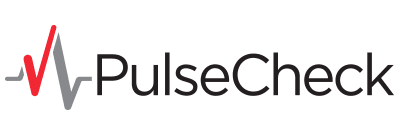In Canada, emergency departments are under constant pressure to maximize efficiency. One of the most important aspects of managing a successful Emerg is effective management of patient financial information. To do this, emergency administrators must consider both cost control and compliance with Canadian healthcare regulations.
Considering that government-sponsored healthcare covers most treatments in Canada, with the exception of private facilities, tracking financial data related to specific treatments and services that patients receive is essential to maintaining your ED’s financial health. If you are looking for ways to streamline how you manage patient financial information at your emergency department, we have some tips today that will help you accomplish that.
First, let’s start with highlighting the importance of centralized data management.
1: Store Your Patient Data in a Centralized Location
Digital storage of patient data can help emergency departments drastically improve their financial management. By keeping patient records in one central location, the patient’s entire medical history and information can be easily accessed and tracked. This makes it easier to quickly review what treatments have been provided, which charges have been incurred for those services, and how much has been collected from the federal or provincial government.
With this data housed in a centralized access point, you can also more effectively reduce the multiplication of treatments, tests, and procedures. Not only will this help to reduce expenses on redundant services but it can also ensure that the patient is receiving the highest level of care and accurate to their treatment needs while saving your organization money in the process.
2: Monitor Your Expenses Regularly
One of the most effective ways to manage your financial information is to keep track of expenses on a regular basis. This includes tracking all expenses related to patient care, such as medications and supplies, as well as other operational costs like utilities and staff wages.
Keeping tabs on these costs will help you better understand where money is being spent and identify areas where you can cut back if necessary. It may also identify new opportunities where you can reallocate budgetary resources towards aspects of your operations that need greater investment to provide better care for patients.
3: Implement Automation
Another way to better manage patient financial information is to implement automation into your process. Automating certain aspects of your financial management system can save time and money while also reducing human error. Automated systems can be used to track payments, generate invoices, store patient data, and more — freeing up valuable resources that could be used elsewhere in the department.
Beyond the convenience that automated solutions can provide, look for one that also generates analytics as it works to streamline your workflow. You can track objective performance metrics throughout your Emerg to better understand how your staff is working and where new process changes and improvements can be made.
Using analytics also holds each member of your staff accountable to an objective standard. Review key metrics that matter most to your department and use averages to establish baselines that you can then communicate to your team to help guide them to performing at an optimal level to ensure peak efficiency.
4: Ensure Accurate Data Entry
Accurate data entry is essential when it comes to maintaining a streamlined financial process in your emergency department. Make sure your staff are properly trained in data entry accuracy and record-keeping protocols. You should also check periodically to ensure that all relevant documents are being accounted for and that any changes or modifications are made in a timely manner.
Using a compliant software solution, much of these operations can be streamlined for your Emerg so that you do not have to review records manually unless in the event of a discrepancy. Having these records accurately maintained also ensures that you are billing for your services at an accurate rate and receiving the appropriate compensation.
5: Stay Up To Date With Regulations
With constantly changing regulations surrounding patient financial information, it’s essential that you stay informed about any new developments or laws which may affect your emergency department’s administrative operations. Check regularly for updates from government bodies such as Health Canada or the Canadian Institute for Health Information (CIHI) so that you can remain compliant with all applicable laws and regulations.
When reviewing software solutions for managing your emergency department, be sure to ask the provider about how their product is updated whenever a new regulation is introduced. Look for one that is agile and adaptable to changes that Ministry of Health may introduce at the national or provincial level.
Better Manage Your Patient Financial Information with PulseCheck
Developed for Canadian emergency departments, PulseCheck helps improve your Emerg efficiency by providing a centralized location for organizations to manage patient financial information, facility analytics, and other key metrics. We remain committed to continuously evolving our solutions so that you can continue to elevate the patient experience while remaining compliant with any new regulatory changes that present themselves.
To learn more about better managing your financial data with us, schedule a demo today.
